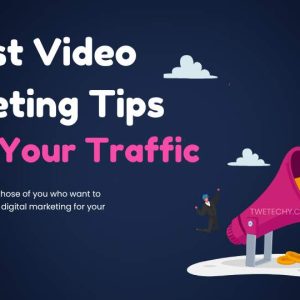As the majority of consumers shift their attention to mobile devices, it’s crucial for businesses to implement mobile advertising strategies to reach their target audience. Mobile advertising can be a powerful tool for driving leads and sales, but it requires a well-planned strategy. In this blog post, we’ll discuss the top 10 mobile advertising strategies that can help businesses achieve their marketing goals.
Top 10 Mobile Advertising Strategies to Drive Leads and Sales
Mobile marketing has become increasingly important in the modern business world, especially for small businesses. With the rise of smartphones, mobile marketing is now a vital part of any marketing strategy, especially for small businesses looking to grow their customer base. In this draft, we will explore how mobile marketing strategies can help small businesses boost their conversion rates.
1. Targeted Advertising
Targeted advertising is a mobile advertising strategy that involves displaying ads to users based on their interests, behaviors, and demographics. This type of advertising is effective because it allows businesses to reach their ideal audience, increasing the chances of conversions. To implement targeted advertising, businesses can use platforms like Facebook Ads and Google Ads, which provide advanced targeting options.
2. In-App Advertising
In-app advertising involves displaying ads within mobile apps. This strategy is effective because it allows businesses to reach their target audience while they’re engaged with an app. To implement in-app advertising, businesses can use mobile ad networks like AdMob and Unity Ads, which offer a range of ad formats, including banner ads, interstitial ads, and rewarded video ads.
3. Mobile Video Advertising
Mobile video advertising involves displaying video ads on mobile devices. This strategy is effective because it allows businesses to convey their message in a more engaging and memorable way. To implement mobile video advertising, businesses can use platforms like YouTube and TikTok, which offer a range of video ad formats, including skippable ads, non-skippable ads, and bumper ads.
4. Native Advertising
Native advertising involves displaying ads that blend in with the content of the platform they’re displayed on. This strategy is effective because it allows businesses to reach their target audience in a non-intrusive way. To implement native advertising, businesses can use platforms like Facebook and Twitter, which offer native ad formats like sponsored posts and promoted tweets.
5. SMS Marketing
SMS marketing involves sending text messages to users who have opted in to receive them. This strategy is effective because it allows businesses to reach their target audience directly on their mobile devices. To implement SMS marketing, businesses can use SMS marketing platforms like Twilio and EZ Texting, which offer features like automated messaging and segmentation.
6. Mobile Search Advertising
Mobile search advertising involves displaying ads on search engine results pages on mobile devices. This strategy is effective because it allows businesses to reach users who are actively searching for products or services related to their business. To implement mobile search advertising, businesses can use Google Ads, which offers a range of mobile-specific ad formats like call-only ads and mobile app promotion ads.
7. Geofencing
Geofencing involves using GPS technology to target users who are within a specific geographic area. This strategy is effective because it allows businesses to reach users who are in close proximity to their physical location. To implement geofencing, businesses can use platforms like Facebook Ads and Google Ads, which offer geofencing options.
8. Mobile Retargeting
Mobile retargeting involves displaying ads to users who have previously interacted with a business but haven’t converted. This strategy is effective because it allows businesses to remind users of their products or services and encourage them to convert. To implement mobile retargeting, businesses can use platforms like AdRoll and Google Ads, which offer retargeting options.
9. Influencer Marketing
Influencer marketing involves partnering with social media influencers to promote a business’s products or services. This strategy is effective because it allows businesses to reach their target audience through a trusted source. To implement influencer marketing, businesses can use influencer marketing platforms like AspireIQ and CreatorIQ, which offer a range of influencer discovery and management tools.
10. Mobile App Install Ads
Mobile app installs ads involve displaying ads that encourage users to download a business’s app. This strategy is effective because it allows businesses to increase their app installs and reach a wider audience. To implement mobile app install ads, businesses can use platforms like Facebook Ads and Google Ads, which offer app-install ad formats.
Benefits of Mobile Marketing for Small Businesses

Mobile marketing has several benefits for small businesses, including:
- Wider Reach: With mobile marketing, businesses can reach a larger audience than traditional marketing methods. People are always on their phones, and mobile marketing allows businesses to reach them wherever they are.
- Cost-Effective: Mobile marketing is cost-effective, especially compared to traditional marketing methods. Small businesses can use mobile marketing to reach their target audience without breaking the bank.
- Better Targeting: Mobile marketing allows businesses to target specific demographics, such as age, gender, location, and interests. This means that businesses can reach the right people with the right message.
Strategies for Boosting Conversion Rates with Mobile Marketing
Here are some strategies that small businesses can use to boost their conversion rates with mobile marketing:
- Mobile-Friendly Website: A mobile-friendly website is essential for any small business looking to boost its conversion rates. A mobile-friendly website ensures that your customers can easily navigate your website on their smartphones, which can lead to higher conversion rates.
- SMS Marketing: SMS marketing is a direct way to reach your customers on their phones. With SMS marketing, you can send personalized messages to your customers, such as special offers and promotions, which can lead to higher conversion rates.
- Mobile Advertising: Mobile advertising is a great way to reach your target audience on their smartphones. With mobile advertising, you can create ads that are specifically designed for mobile devices, which can lead to higher conversion rates.
Conclusion
Mobile marketing is essential for small businesses looking to boost their conversion rates. With the benefits of wider reach, cost-effectiveness, and better targeting, small businesses can use mobile marketing to reach their target audience and increase their sales. By implementing strategies such as a mobile-friendly website, SMS marketing, and mobile advertising, small businesses can take advantage of the power of mobile marketing and boost their conversion rates.
Mobile advertising can be a powerful tool for driving leads and sales, but it requires a well-planned strategy. By implementing the top 10 mobile advertising strategies discussed in this blog post, businesses can reach their target audience and achieve their marketing goals.

